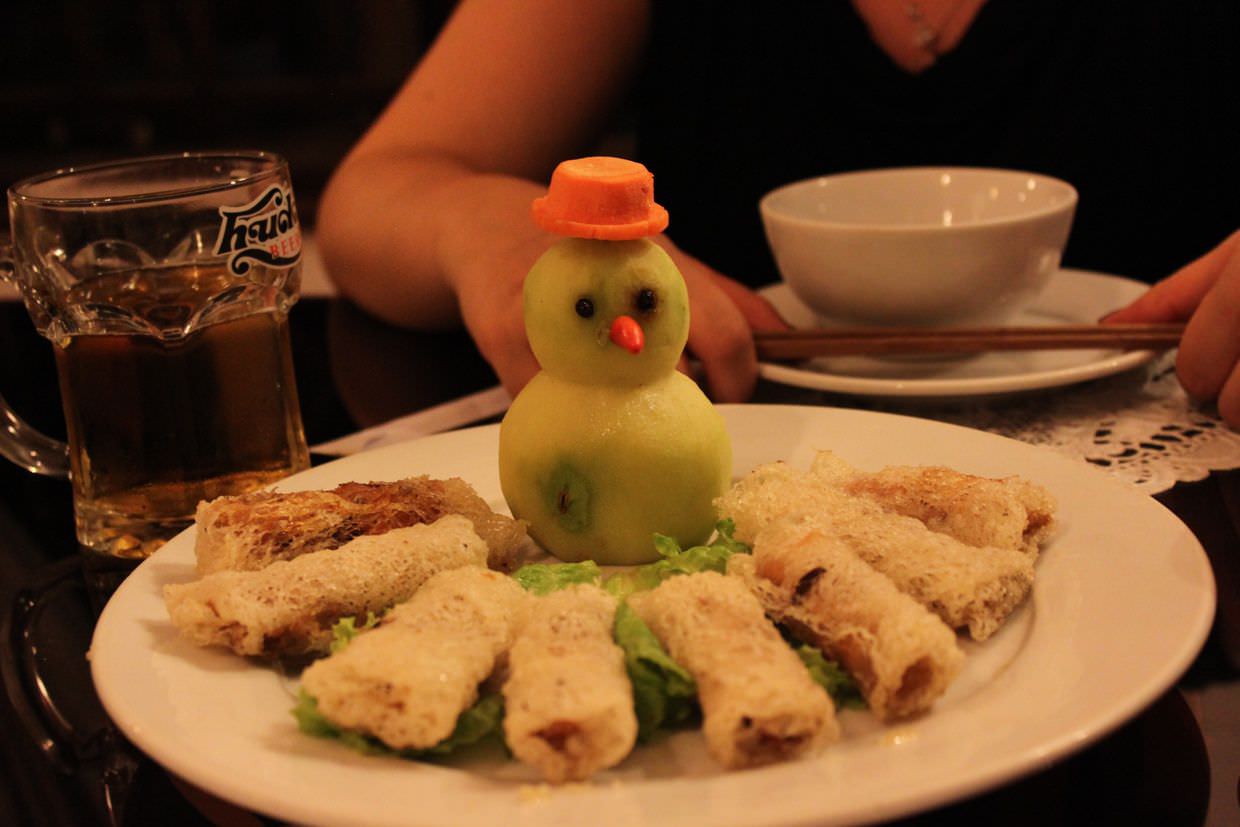Khai Dinh and Minh Mang mausoleums, Thien Mu pagoda
Emperors’ tombs
Sam had been on Trip Advisor reading about the best things to do in and around Hue. The top rated attractions were the emperors’s tombs outside of Hue, so we booked an overly expensive tour through our hotel, not wanting to hunt around all morning trying to find something else.
In the lobby, as an elderly Australian tour group were checking in to the hotel, we met our guide and driver. Hello! We climbed in to the back of a black air conditioned car and sped away, out of town towards the tomb of Khai Dinh, before it got too hot. We escaped the busy Hue streets, out into the countryside, climbing into the hills where the Vietnamese emperors have their resting place.
Khai Dinh’s tomb
Khai Dinh’s tomb is a mix of Vietnamese and French architecture. It’s small but intricate, and took 11 years to build. The Emperor had visited France in the early twentieth century and brought back a certain style. The buildings are all blackened concrete, and almost gothic in appearance.
Getting out of the car, we faced three flights of stairs to the top. Immediately sweating in the heat, out guide shares some of his wet wipes, cleaning and cooling, a great idea. Our umbrellas were already acting as parasols.
Up the first flight of stairs, and we are in the Honour Courtyard, where lines of statues are placed, servants and armies to aid the emperor in his afterlife. Between the rows of statues lies a small building, inside, in Chinese scripture, it details how to build the mausoleum. Our guide explains the meanings the emperors gave to numbers, and the importance of colours, though most of that escapes me now.

We climb up two more flights of stairs, to the main building, Thien Dinh, and Khai Dinh’s resting place. He died in 1925. The outside is dark, concrete and gothic; but inside there’s an explosion of colour, it is golden and beautiful. Sculptures of dragons climb the walls, old broken pottery is coerced into great depictions of the four seasons, with quaint cute little birds at every intersection. The back most room, where the tomb lies, is even more detailed, with deranged dragons circling the ceilings. And sitting in the centre, a life size golden statue of Khai Dinh himself, on his golden throne. Behind, a ruby blazoned sunrise.
The room to the far left is understated. A bronze statue of Khai Dinh as a leader, with hand on sword, sits near to a painting of him at his writing desk. Around the edges are antique European furniture, and cupboards filled with ancient crockery.
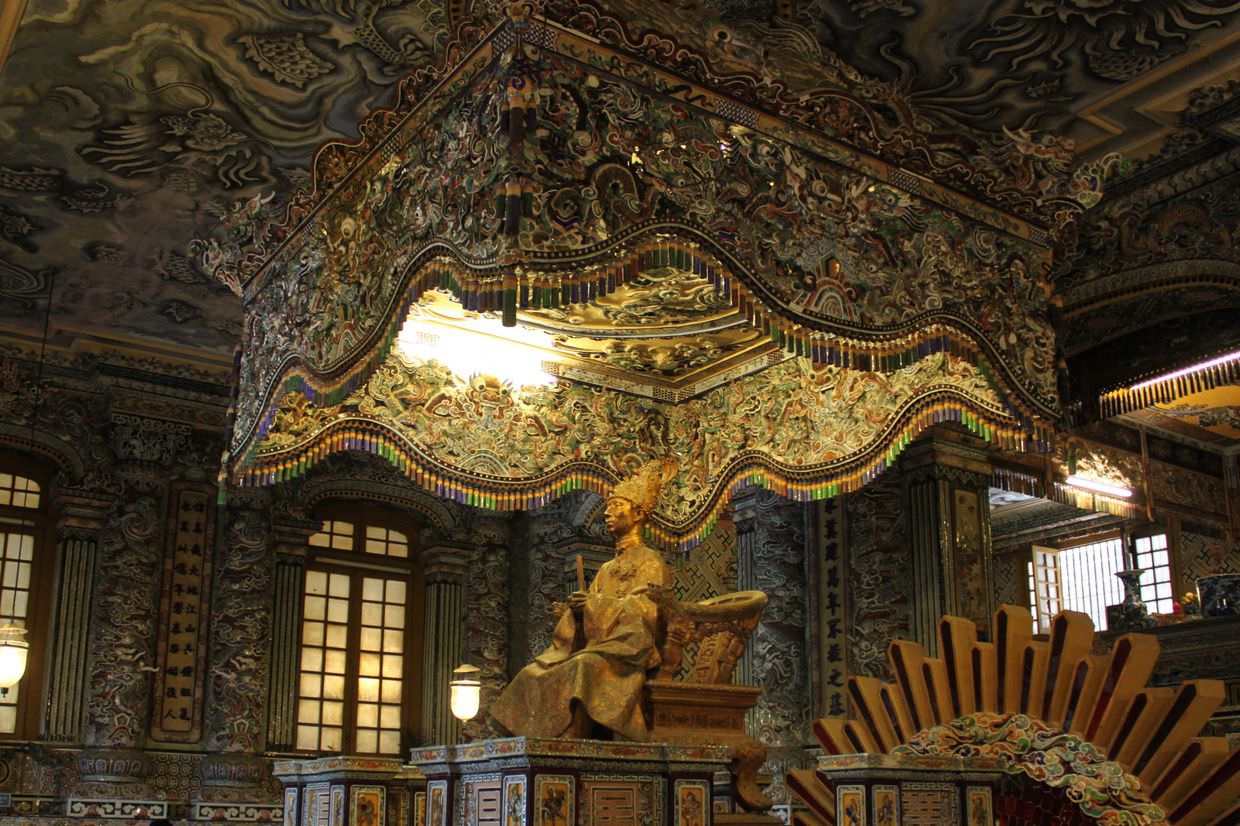
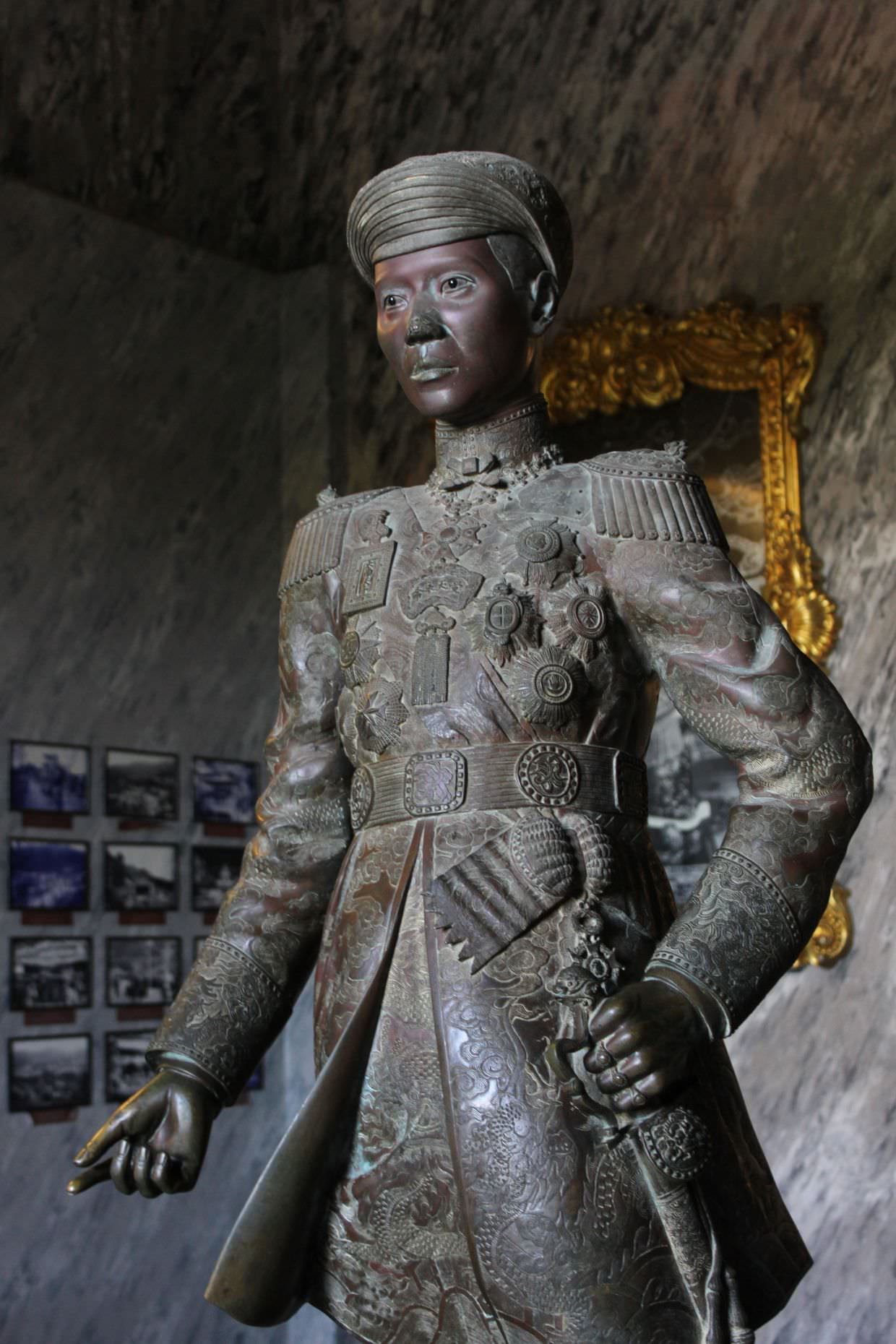
Stepping out of the tomb, the veranda opens up to a stunning view of the surrounding hills. In the distance, a towering modern white Buddha pokes his head out. We took our photos, though are guide never quite moved out of the way enough. His head or hand always slightly in the way.

Minh Mang’s mausoleum
Back down to the car, with its cooling air conditioning, we drove onwards to the second stop of the day, Minh Mang’s mausoleum. And how radically different this was. A huge area, like a public garden, with a central hill, in which the emperor is buried, somewhere, with all his riches and relics. No one knows exactly where.
This mausoleum is much more traditional, in a sublime natural setting; trees, plants, gardens, lakes, a large park and forest. It’s serene. The area was also planned to be used as a summer palace, with places for the emperor to relax, but Minh Mang never saw the place complete, he died too soon.
We entered through a side entrance (another main entrance reserved only for an emperor), into a baking open courtyard with dragon and lion statues. A direct path leads from the outer wall, through three complexes, each up and down stairs, to the hill and the emperor’s resting place. We proceeded through decorated arches, paved promenades and red painted pavilions, each separated with lakes and gardens.
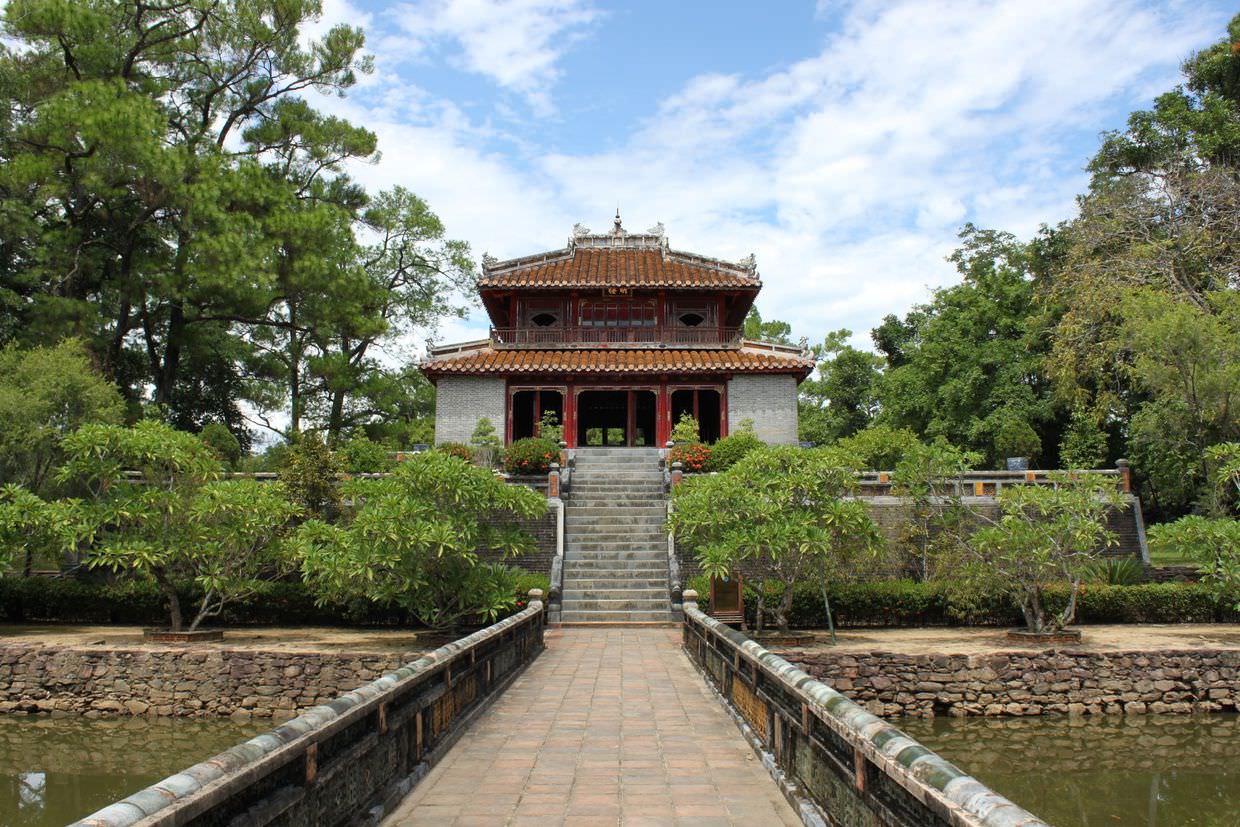
The Asian gardens were beautiful and relaxing, we could have spent all day here. Indeed, we spent a long time just sitting, watching the view, listening to the birds, and drinking cold drinks. Sat on an old red painted doorframe at the last of the pavilions, we looked out at a path which led over lotus filled ponds and beneath royal signage to the giant hill where the emperor lies and its locked gate. Above us, blue skies and fluffy white clouds.
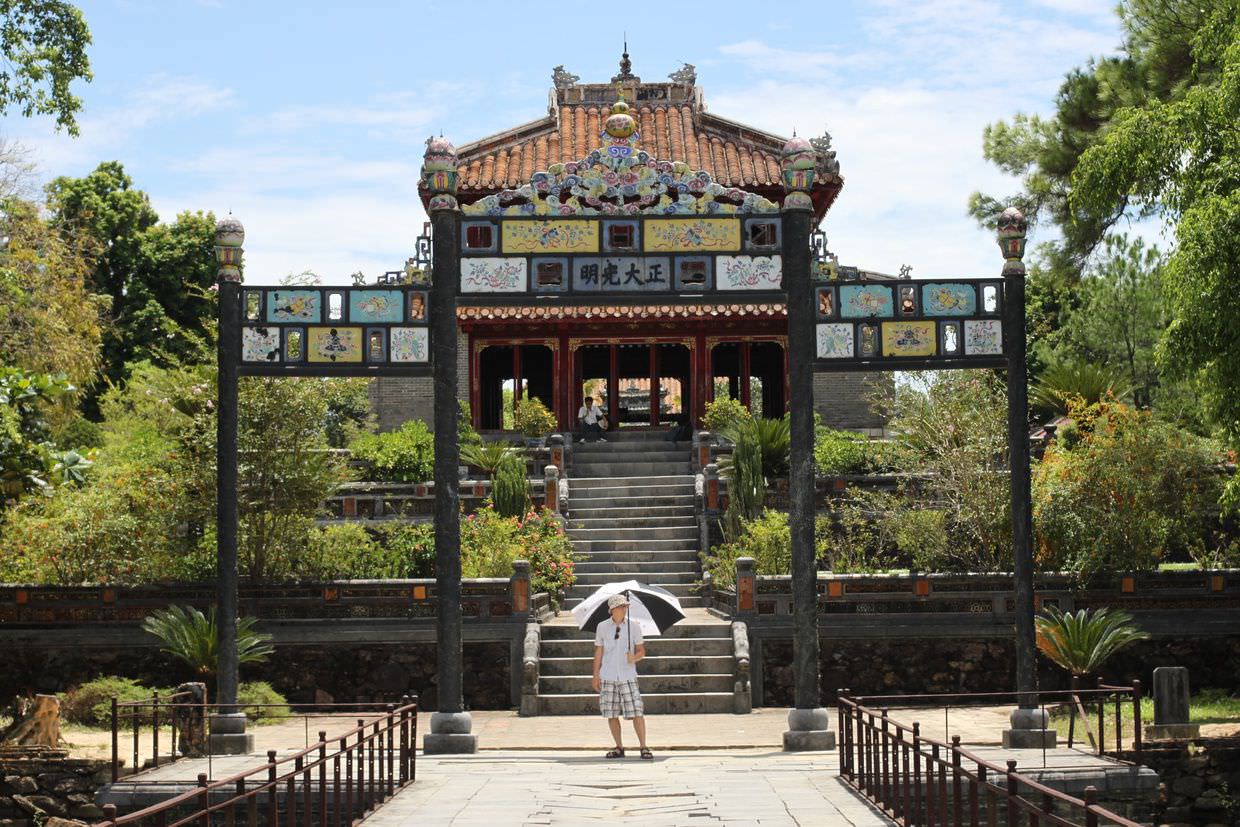
Dragon boat
Not really wanting to leave, we set off to meet our dragon boat, a garish sky blue boat with a yellow painted dragon’s head. We left Minh Mang’s tomb and set off up stream, back towards Hue, it took about an hour. It was a long, slow journey with not much to see. Men on boats churned the riverbed, collecting salt, or mud, or minerals, to sell. Cattle grazed by the river, and there were the occasional small villages by the water, with more moored boats than buildings. We passed a couple of other tourists along the way, and our driver tried to sell us goods, but when we showed no interest she put away the tourist tat.
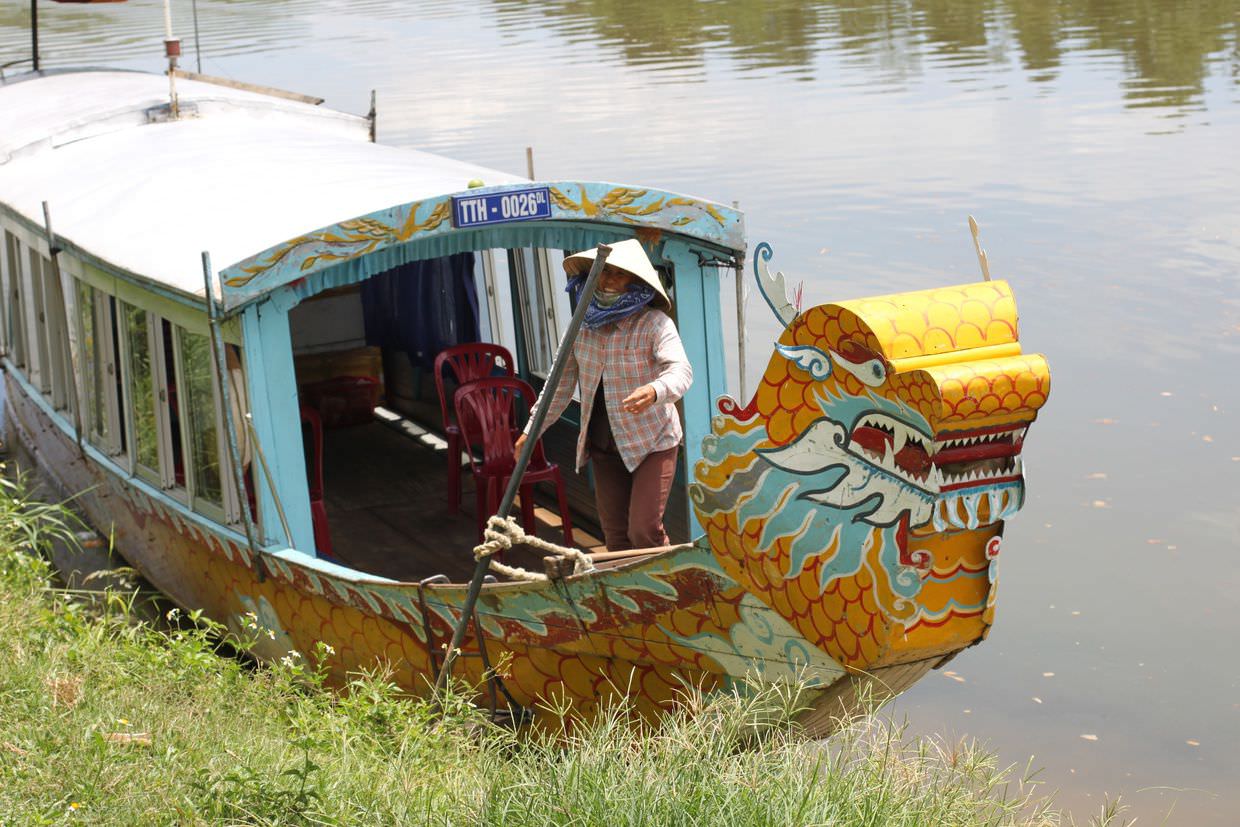
Thien Mu pagoda
We arrived at the Thien Mu pagoda which overlooks Perfume River. It’s 21m high, octagonal and has seven storeys. Beyond the pagoda are a couple of humble active temples with practicing monks. Inside the temple we removed our shoes and watched as others paid their respects, burning incense before a giant Buddha statue.
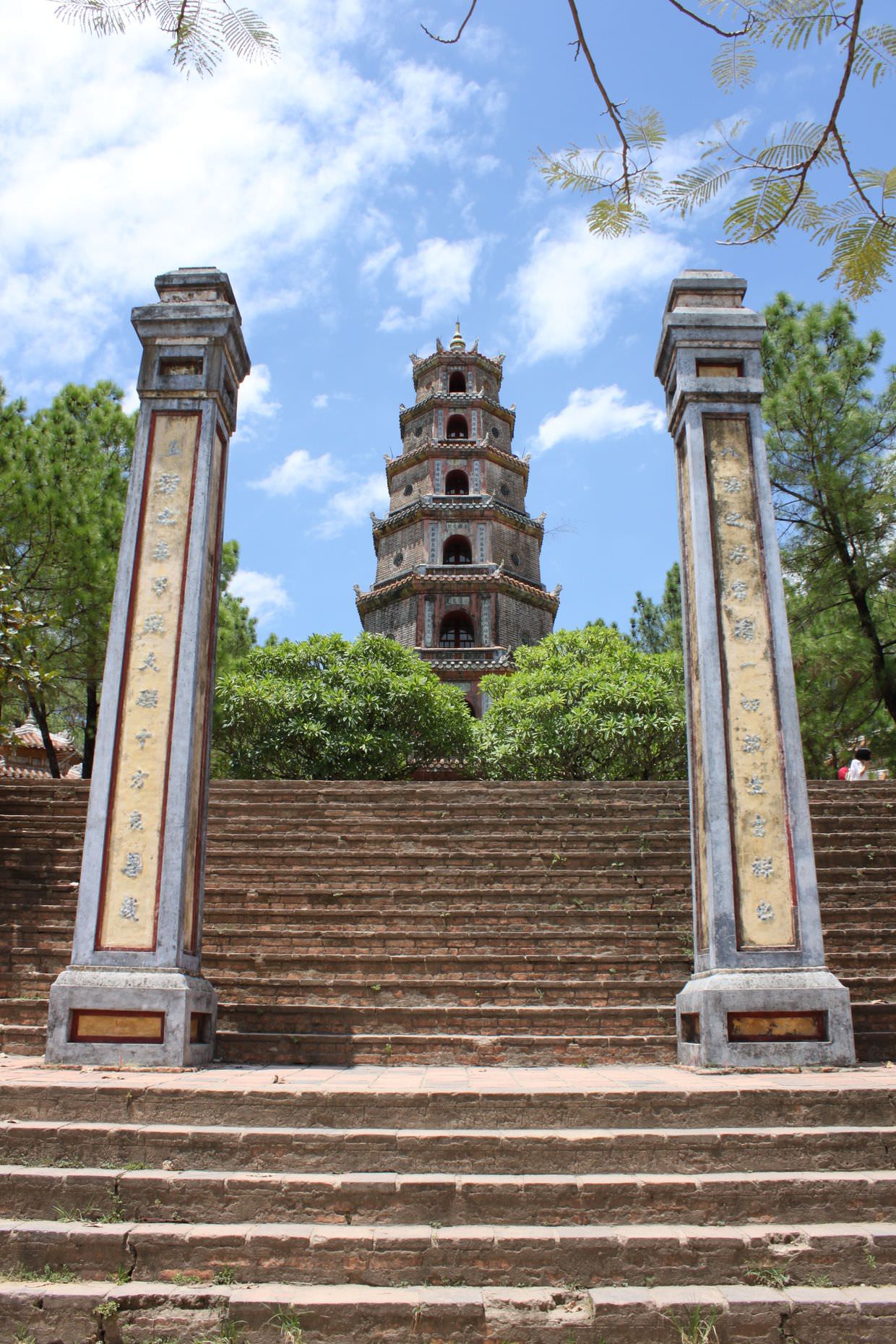
We also poked out heads into some of the monk’s side buildings, where they were mostly having lunch. This place is known for housing the blue Austin Westminster car that the monk Thich Quang Duc took to Saigon before his famous self immolation.
At the back there’s a lovely bonsai tree garden and a newly erected pagoda in memory of a recently passed senior monk. Through the fence at the very rear, in amongst all the pine trees, a huge graveyard can be seen, one of many out of town Vietnamese graves in the country.
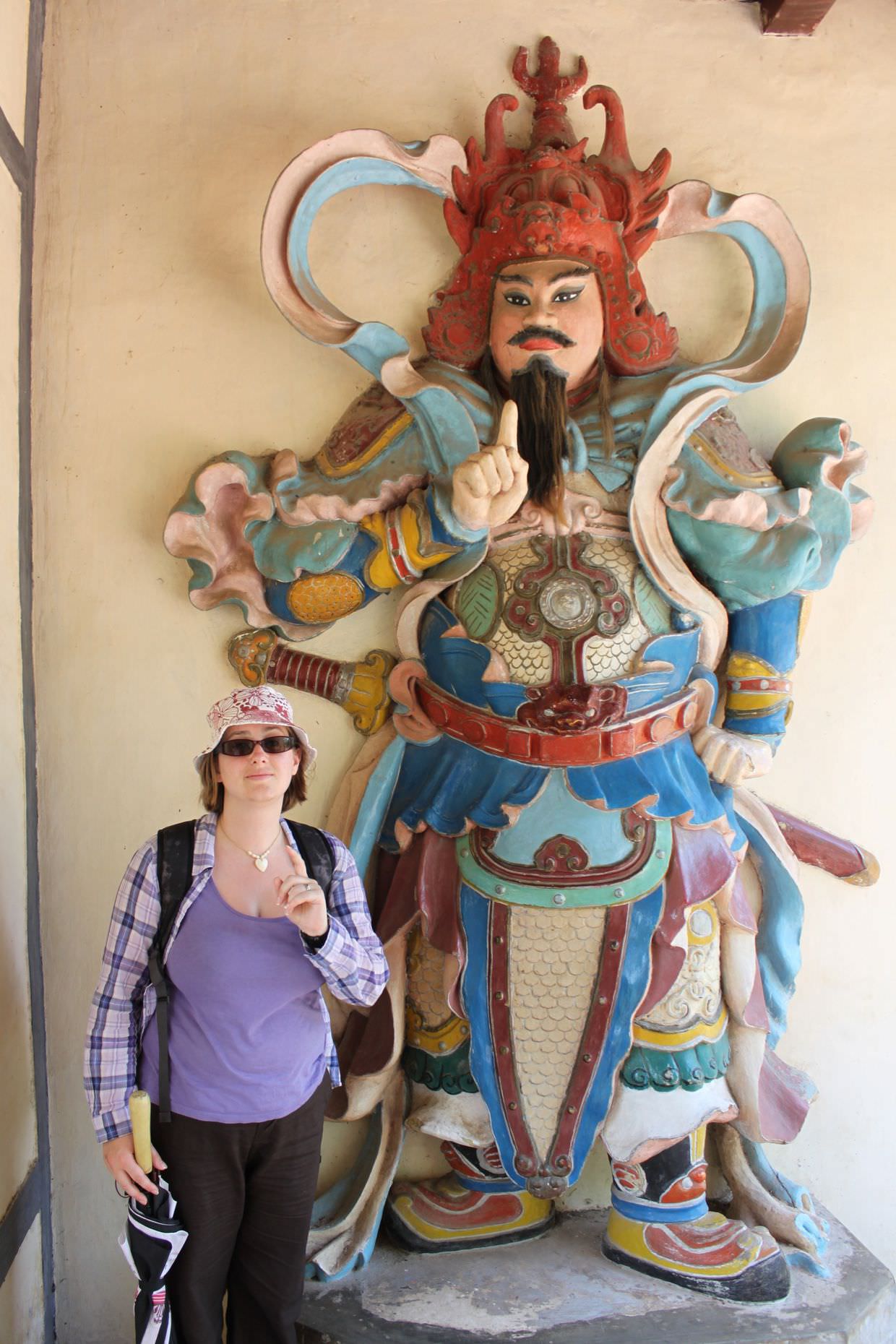
The boat took us directly back to the hotel, stopping at a jetty right next to it. In our room we ate fruit and snacks, rested and then headed out into town for dinner.
Disappointing Anh Binh
We took a taxi to the Tran Tien bridge and wandered around the park as we waited to grow hungry. A huge storm was brewing over the river. Despite this, the budding capitalist Vietnamese kept offering to sell us boat trips. I refused and gestured to the sky.
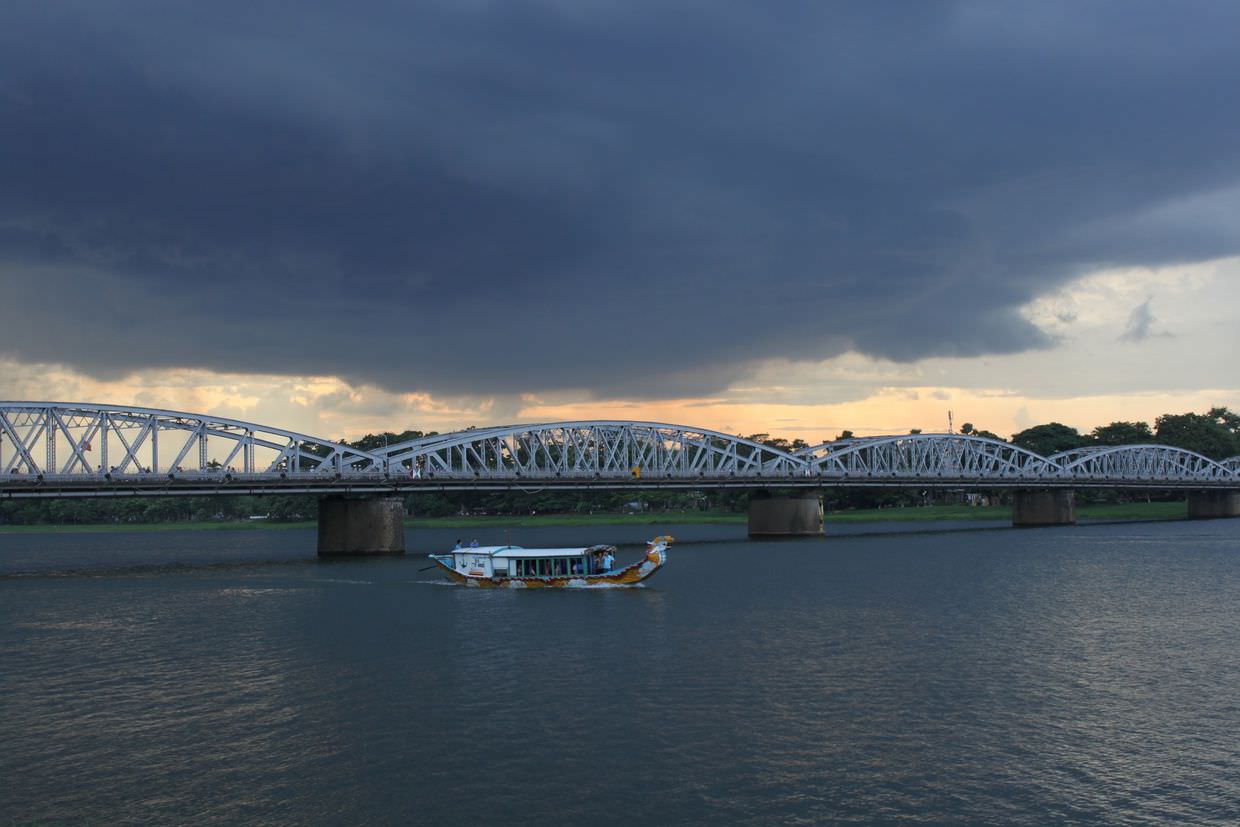
Near the river was a large white lotus shaped restaurant, intriguing but a little too kitschy for our taste. We set about exploring the Eastern streets of Hue, shopping for snacks, tweezers and other odds and ends. Down a small side alley we found a recommended restaurant, one of Lonely Planet’s top picks, Anh Binh, and it looked nice.
But our table had ants on it, and when we moved they came with us. It seems every evening meal in Hue would be thwarted by ants of some kind or another. We persevered, our springs rolls were of the average out-of-a-packet variety and came with a peculiar snowman carving. The mains were average too, Sam described her beef dish as “normal”, my eel dish was tasty, but all too boney. The Lonely Planet description wasn’t fitting at all. The demeanour of the waiters was interesting too, any orders were shouted, one at a time, to the next person, one by one until it reached the kitchen. The furniture was nice though.
